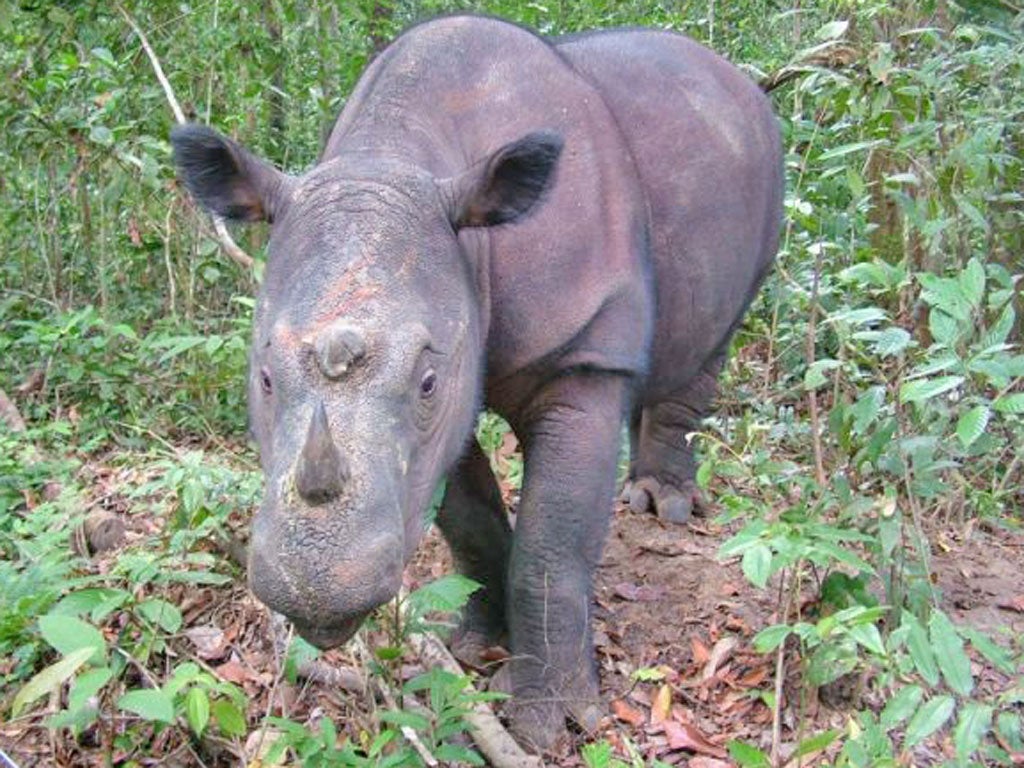Rate of species decline 'no longer within safe limit' for humans, experts warn
'Until and unless we can bring biodiversity back up, we’re playing ecological roulette'

Animal and plant species are declining so quickly that world biodiversity loss is no longer within a “safe limit” and could start to threaten much of the planet’s ability to support humans, according to a major new study.
Experts analysed nearly 2.4 million records about more than 39,000 species at 18,600 different places around the world.
They discovered that for 58.1 per cent of the world’s land surface the loss of biodiversity was serious enough to call into question its ability to sustain the 5.3 billion people who live there.
The research, published in the prestigious journal Science, comes as scientists are considering redefining the current geological epoch as the Anthropocene – because of humanity’s dramatic effects on the Earth, including what many fear will be the planet’s sixth mass extinction of life.
One of the researchers, Dr Tim Newbold, of University College London, said: “This is the first time we’ve quantified the effect of habitat loss on biodiversity globally in such detail and we’ve found that across most of the world biodiversity loss is no longer within the safe limit suggested by ecologists.
“We know biodiversity loss affects ecosystem function, but how it does this is not entirely clear. What we do know is that in many parts of the world, we are approaching a situation where human intervention might be needed to sustain ecosystem function.”
The “safe limit” was set at a 10 per cent reduction in species’ abundance, compared to the original number before humans took over the land. However, this definition is controversial as some researchers believe a reduction of 70 per cent would still be safe.
The researchers found species’ abundance had fallen to 88 per cent, once new species were taken into account.
In the paper in Science, they warned that there was an alarming trend in the rate of extinctions.
“Species-removal experiments suggest that loss of ecosystem function accelerates with ongoing species loss, implying there may be thresholds beyond which human intervention is needed to ensure adequate local ecosystem function,” they wrote.
Grasslands, savannahs and shrublands were the worst affected areas, following by many forests.
“The greatest changes have happened in those places where most people live, which might affect physical and psychological well-being,” Dr Newbold said.
“To address this, we would have to preserve the remaining areas of natural vegetation and restore human-used lands.”
He said other scientists were trying to get a better idea of the 'safe' level of biodiversity loss. Areas of high biodiversity provide 'ecosystem functions' such as keeping water quality high, controlling soil erosion, nutrient-cycling, which is important for plant growth, and also the pollination of plants and food crops by a variety of insects.
Dr Newbold said there were already signs of problems in some places.
"If we reach tipping points in ecological systems and we lose functions in a wholesale manner, the consequences could be much more severe," he said.
The research team included experts from the United Nations Environment Programme’s World Conservation Monitoring Centre in Cambridge, the UK’s Natural History Museum, the Natural History Museum of Denmark, and the Commonwealth Scientific and Industrial Research Organisation in Australia.
Professor Andy Purvis, of the Natural History Museum in London, who also worked on the study, said he was concerned by their findings.
“Decision-makers worry a lot about economic recessions, but an ecological recession could have even worse consequences – and the biodiversity damage we’ve had means we’re at risk of that happening,” he said.
“Until and unless we can bring biodiversity back up, we’re playing ecological roulette.”
In September last year, the United Nations adopted Sustainable Development Goals designed to protect, restore and sustainably use ecosystems.
In the Science paper, the researchers wrote: "Our results highlight the magnitude of the challenge. Exploitation of terrestrial systems has been vital for human development throughout history, but the cost to biosphere integrity has been high.
"Slowing or reversing the global loss of local biodiversity will require preserving the remaining areas of natural (primary) vegetation and, so far as possible, restoring human-used lands to natural (secondary) vegetation.
"Such an outcome would be beneficial for biodiversity, ecosystems and – at least in the long term – human well-being."
Join our commenting forum
Join thought-provoking conversations, follow other Independent readers and see their replies
Comments
Bookmark popover
Removed from bookmarks